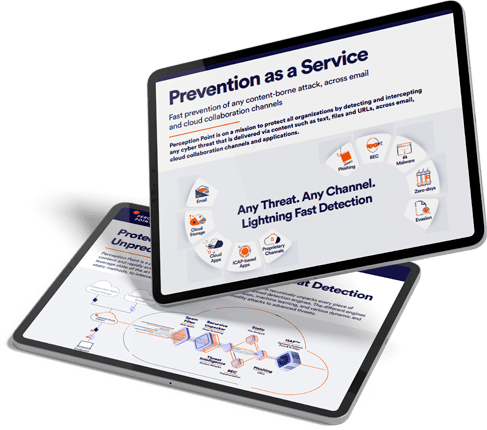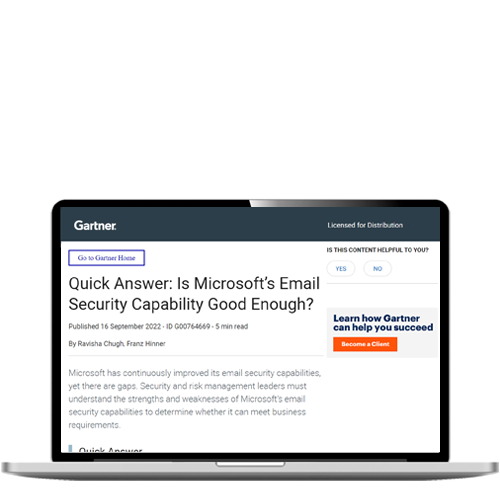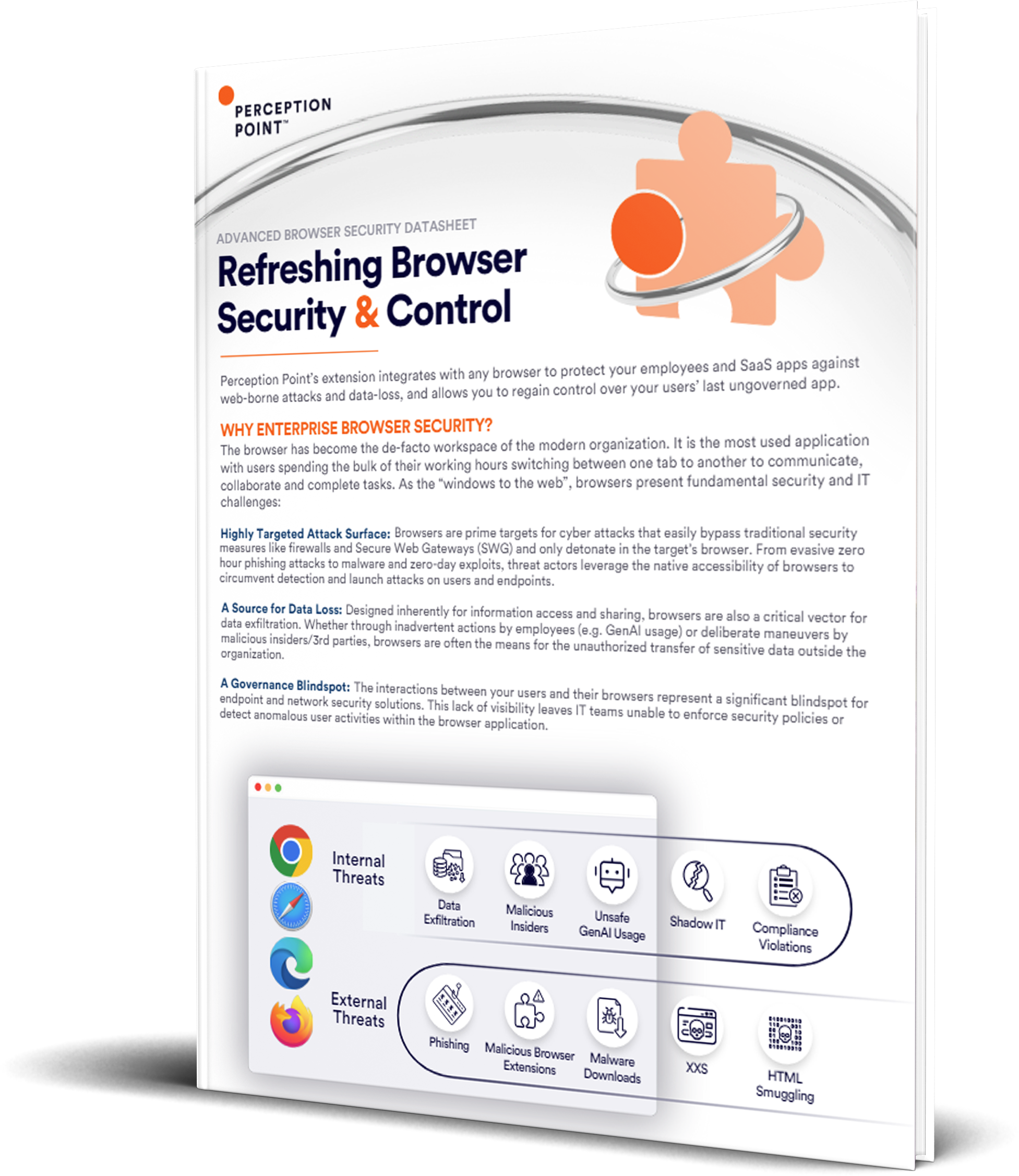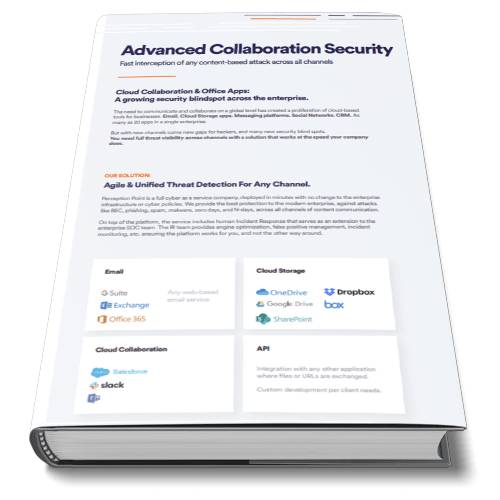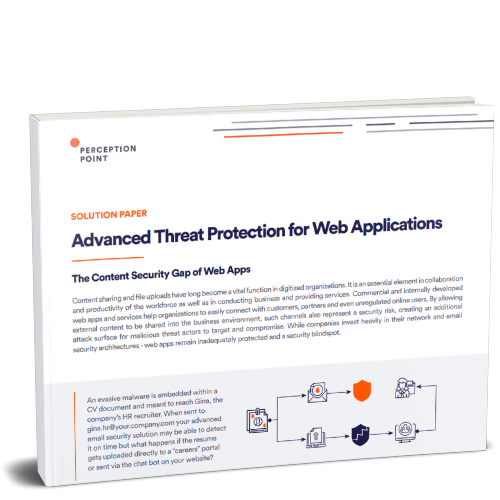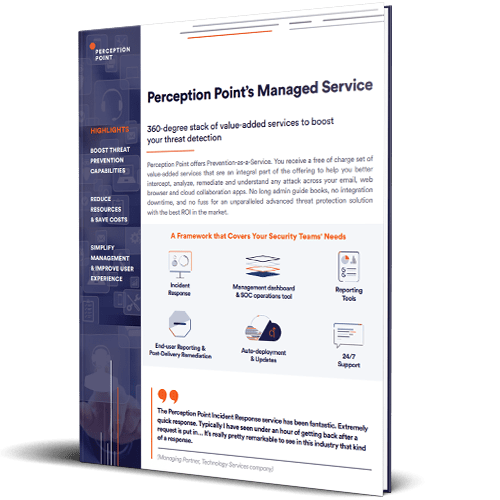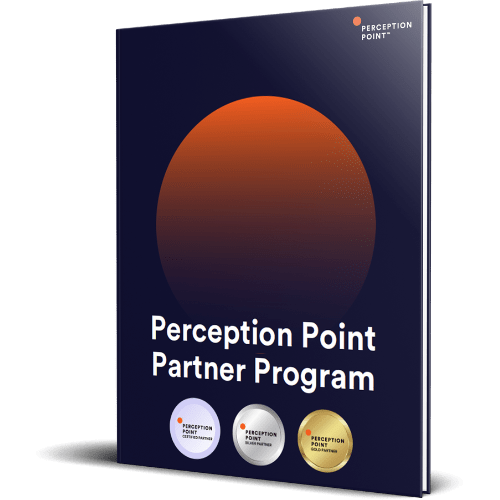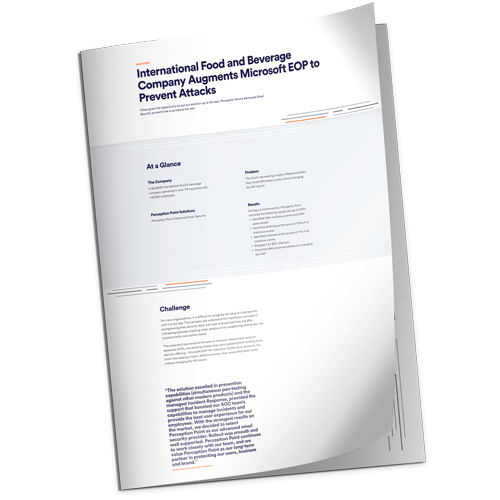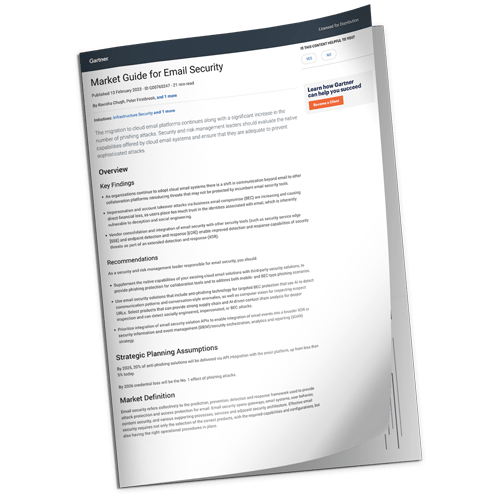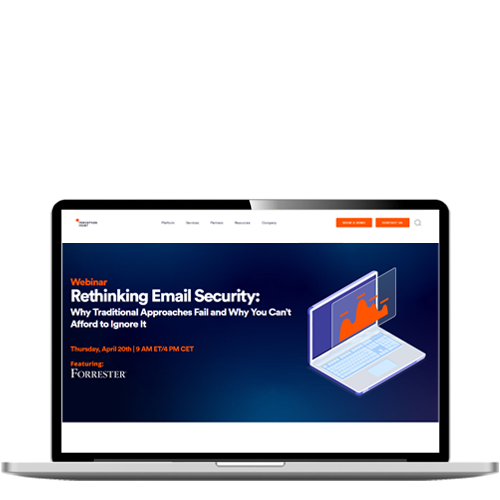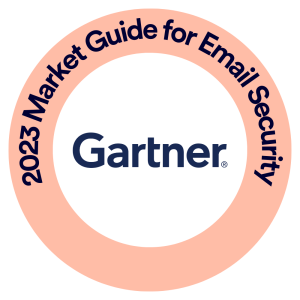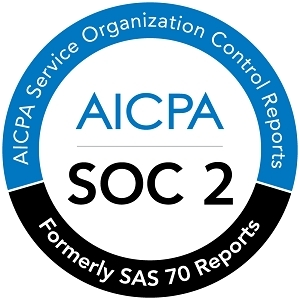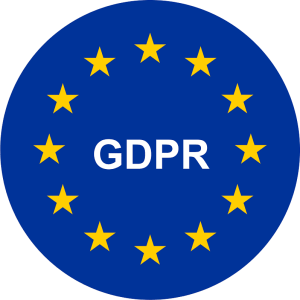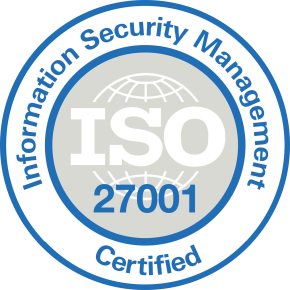What Is Anti-Spam?
Anti-spam refers to the technologies, techniques, and practices employed to prevent spam, which is unsolicited or irrelevant messages sent over the internet, primarily through email. Anti-spam solutions are designed to detect, block, or filter out spam emails from users’ inboxes. They use a variety of methods to identify spam, including pattern recognition, blacklists, machine learning algorithms, and checking the authenticity of email sources.
The effectiveness of anti-spam technology hinges on its ability to accurately differentiate between legitimate emails and spam. This is challenging due to the evolving nature of spam tactics and the need to avoid false positives, where legitimate emails are incorrectly marked as spam. To maintain this balance, anti-spam systems continually update their criteria and algorithms based on emerging spam patterns and user feedback.
In addition to protecting individual users, anti-spam is particularly crucial for organizations. It helps maintain the efficiency and security of business communications, protecting sensitive data from phishing attempts and other email-based threats. Anti-spam tools are integral components of an organization’s overall cybersecurity strategy, working alongside other security measures like firewalls, anti-virus software, and intrusion detection systems.
This is part of a series of articles about email security
In this article
Why Is Anti-Spam Important for Organizations?
An anti-spam tool offers the following important benefits:
- Declutters email inboxes: Spam emails can flood an inbox, making it difficult for employees to locate important and legitimate emails. By filtering out spam, an anti-spam system ensures that employees’ inboxes remain organized and focused on relevant communications.
- Preventing phishing and other malicious emails: Phishing, a common tactic used by cybercriminals, involves sending fraudulent emails that appear to be from trustworthy sources. These emails often trick users into divulging sensitive personal or financial information, such as passwords or credit card details. An effective anti-spam solution can identify and block phishing emails.
- Prevents spread of viruses, spyware, and ransomware: Spam emails sometimes carry harmful malware. Opening an email attachment or clicking on a malicious link can lead to the installation of viruses, spyware, or ransomware on a user’s device. An anti-spam system acts as a barrier against these threats, improving security. However anti-spam solutions are not a replacement for anti-malware solutions, which must be deployed on user devices.

Tal ZamirCTO, Perception Point
Tal Zamir is a 20-year software industry leader with a track record of solving urgent business challenges by reimagining how technology works.
TIPS FROM THE EXPERTS
- Use AI-powered anomaly detection
Deploy AI-powered anomaly detection that continuously monitors patterns of email communication within your organization. This can help spot deviations from normal behavior, such as sudden spikes in emails from previously unknown sources, indicative of a potential spam campaign or phishing attack. - Employ deep link inspection
Go beyond basic URL filtering by using deep link inspection. This involves analyzing the actual content behind shortened or redirected URLs within emails, ensuring that even obfuscated or multi-stage phishing attempts are caught. - Implement multi-factor sender verification
Combine SPF, DKIM, and DMARC with additional sender verification layers, such as DNS-based Authentication of Named Entities (DANE) or MTA-STS. These protocols add extra layers of security, ensuring that emails are not only authenticated but also encrypted and properly routed.
Anti-Spam Regulations and Laws Across the World
Spam is a global problem that has been addressed by many governments in the form of legislation. Here are some of the primary laws enacted around the world which place civil and criminal penalties on sending of unsolicited email.
USA: 2003 CAN-SPAM Act
In the United States, the fight against spam is regulated by the 2003 CAN-SPAM Act (which stands for Controlling the Assault of Non-Solicited Pornography And Marketing). The Act sets the rules for commercial email and gives recipients the right to have businesses stop emailing them. The Act covers all commercial messages, which it defines as “any electronic mail message the primary purpose of which is the commercial advertisement or promotion of a commercial product or service.”
Under the CAN-SPAM Act, penalties for non-compliance are steep. Each separate email in violation of the law is subject to penalties of up to $51,744, and more than one entity may be held responsible for violations. For example, both the company whose product is promoted in the message and the company that originated the message may be legally responsible.
Some of the main requirements of the CAN-SPAM Act include that the message must be identified as an advertisement, the sender must include their physical postal address, and the message must include a clear and conspicuous explanation of how the recipient can opt out of receiving future email from the sender.
EU: Directive on Privacy and Electronic Communications
In the European Union, the regulation of spam is covered by the Directive on Privacy and Electronic Communications. This directive, which is often referred to as the ePrivacy Directive, was passed in 2002 and prohibits the sending of unsolicited commercial communications by fax, email, or SMS without prior consent from the recipient. This is often referred to as the “opt-in” requirement.
The ePrivacy Directive has been implemented into national laws by each of the EU member states and is enforced by national authorities. Penalties for non-compliance vary by country, but can be substantial. The Directive also requires that service providers ensure the security of their services and report any security breaches to the national authority.
In addition to the ePrivacy Directive, the General Data Protection Regulation (GDPR) also has implications for spam. The GDPR, which was implemented in 2018, requires companies to obtain explicit consent from individuals before collecting or processing their personal data. This includes email addresses, meaning that the GDPR strengthens the “opt-in” requirement of the ePrivacy Directive.
UK: Data Protection Act
In the United Kingdom, spam is regulated by the Data Protection Act of 2018, which is the UK’s implementation of the GDPR. The Act requires companies to obtain consent before sending marketing emails, with some exceptions. It also gives individuals the right to know what data is being collected about them, to access that data, to object to the processing of their data, and to have incorrect data corrected or deleted.
The Information Commissioner’s Office (ICO) is responsible for enforcing the Data Protection Act, and can issue fines of up to £500,000 for serious breaches of the Act. The ICO also provides guidance for businesses on how to comply with the Act, including how to obtain valid consent for marketing emails.
Canada: CASL
In Canada, the regulation of spam is governed by the Canadian Anti-Spam Legislation (CASL). CASL was passed in 2014 and is one of the most stringent anti-spam laws in the world. It covers not only email, but also other forms of electronic communication such as text messages and social media.
CASL requires businesses to obtain consent before sending commercial electronic messages, to clearly identify themselves in their messages, and to provide a way for recipients to opt out of receiving future messages. The penalties for non-compliance with CASL can be severe, with fines of up to $10 million for businesses and $1 million for individuals.
Australia: Spam Act of 2003
In Australia, spam is regulated by the Spam Act of 2003. The Act prohibits the sending of unsolicited commercial electronic messages, and requires that such messages include a functional unsubscribe facility. The Act also prohibits the use of harvested address lists for the purpose of sending spam.
The Australian Communications and Media Authority (ACMA) is responsible for enforcing the Spam Act, and can issue infringement notices, seek court-imposed penalties, and accept court enforceable undertakings. The maximum penalty for a single breach of the Spam Act is $2.1 million.
Key Anti-Spam Emails Techniques
Here are the common ways anti-spam solutions filter and block spam emails.
1. Email Authentication Protocols
Email authentication protocols work by verifying the authenticity of the sender’s email to prevent email spoofing. Two widely used email authentication protocols are Sender Policy Framework (SPF) and DomainKeys Identified Mail (DKIM). SPF allows the recipient’s email server to check if the incoming email is originating from an authorized server based on the sender’s domain. DKIM uses digital signatures to verify the integrity of the email.
Another effective email authentication protocol is Domain-based Message Authentication, Reporting, and Conformance (DMARC). DMARC builds upon SPF and DKIM by providing additional policies and reporting mechanisms. It allows domain owners to specify how emails that fail authentication should be handled, whether to reject or quarantine them. DMARC also generates reports that provide insights into the email authentication status, helping organizations identify and prevent potential email spoofing attacks.
2. Checksum-Based Filtering
Checksum-based filtering is a technique used to identify spam emails based on their unique checksum values. A checksum is a numerical value calculated from the contents of the email. By comparing these checksum values with a database of known spam emails, we can quickly determine if an email is spam or legitimate.
This technique is particularly useful for detecting spam emails that have common characteristics, such as specific keywords or patterns. However, it is important to regularly update the checksum database to ensure its effectiveness in catching new spam emails. Some anti-spam solutions typically come with pre-built checksum databases and provide options to customize the filtering criteria based on specific requirements.
3. DNS-Based Blacklists
DNS-based blacklists, also known as real-time blackhole lists (RBLs), are a widely used technique to combat spam emails. RBLs are maintained by organizations or communities that continuously monitor and identify IP addresses associated with spamming activities. When there’s an incoming email, the email server checks the IP address of the sender against the RBL database. If the IP address is found in the blacklist, the email is either rejected or flagged as spam.
DNS-based blacklists provide a simple way to filter out spam emails, but false positives can occur, where legitimate emails from blacklisted IP addresses are also blocked. To mitigate this issue, anti-spam solutions implement scoring mechanisms that consider multiple factors, such as the sender’s reputation and email content. By fine-tuning these scoring parameters, organizations can strike a balance between preventing spam and ensuring legitimate emails are not mistakenly blocked.
4. URL Filtering
Spam emails often contain malicious URLs that can lead to phishing sites, malware downloads, or other fraudulent activities. URL filtering aims to identify and block these malicious URLs. This can be achieved by leveraging various methods, such as real-time URL analysis, reputation-based filtering, and machine learning algorithms.
URL analysis involves scanning the content of the email and checking the URLs against a database of known malicious sites. Reputation-based filtering relies on reputation scores assigned to URLs based on their historical behavior. URLs with low reputation scores are flagged as potential threats. Machine learning algorithms can analyze the characteristics and patterns of URLs to determine their legitimacy.
5. Rule-Based Filtering
Rule-based filtering involves defining a set of rules or patterns to identify and classify spam emails. These rules can be based on various factors, including email headers, content, sender information, and attachment types. Rule-based filters are highly customizable and can be tailored to suit the specific needs of an organization.
To create effective rule-based filters, anti-spam solution providers analyze the characteristics of known spam emails and derive patterns that can be used for classification. These patterns can then be translated into rules that are applied to incoming emails. Rule-based filters can be implemented at both the email server level and the email client level, providing an additional layer of protection.
6 Strict Enforcement of RFC Standards
The RFC (Request for Comments) standards define the rules and guidelines for various internet protocols, including email protocols. By strictly enforcing these standards, organizations can prevent spammers from exploiting vulnerabilities and loopholes in email systems.
For example, RFC standards define how email servers should handle bounce messages, which are automated responses sent when an email fails to be delivered. Spammers often use bounce messages to verify the validity of email addresses. By configuring email servers to handle bounce messages according to RFC standards, organizations can prevent spammers from gaining this information.
Another example is the enforcement of proper email headers and MIME (Multipurpose Internet Mail Extensions) standards. These standards ensure that email headers contain accurate information about the sender, recipient, and content types.
How Do Anti-Spam Tools Work?
Here are some of the main components and processes involved in anti-spam.
1. Email Filtering
Anti-spam tools typically start by filtering emails using one or more of the techniques above—checksum-based filtering, DNS-based blacklists, URL-based filtering, or rule-based filtering. When an email is caught by one of these filters, it is blocked from reaching recipient mailboxes and analyzed further for signs of spam.
2. Recipient Verification
Anti-spam tools typically use the Recipient Verification Protocol (RVP) to confirm the existence of the recipient’s email address. When an email is received, the anti-spam tool initiates a conversation with the sender’s server to ensure that the recipient’s address is valid. If the recipient’s address doesn’t exist, the email is rejected. RVP helps to prevent spam from reaching non-existent or invalid email addresses.
3. Sender Verification
Anti-spam tools commonly use Sender Policy Framework (SPF), an authentication technique, to verify the legitimacy of the sender’s domain. SPF allows email server administrators to specify which IP addresses are allowed to send emails on behalf of their domain. When an email is received, the anti-spam tool checks the SPF record of the sender’s domain to determine if the email is legitimate. If the SPF record doesn’t match, the email may be marked as spam.
4. Content Analysis
Content analysis tools are designed to analyze the content of an email and determine if it is spam or not. These tools use statistical methods, rulesets, and machine learning algorithms, to examine factors such as keywords, formatting, attachments, and URLs. If the content analysis tool detects suspicious patterns or characteristics commonly associated with spam, the email may be flagged or blocked.
5. Reputation Scoring
Anti-spam tools can assign a reputation score to each email sender. The reputation score is based on various factors such as the sender’s IP address, domain history, and email sending behavior. If a sender’s reputation score falls below a certain threshold, their emails may be treated as spam, even if they don’t show other signs of spam.
How to Evaluate Anti-Spam Solutions
Here are some things to consider when choosing an anti-spam solution.
Is the Anti-Spam Solution Cloud-Based?
Cloud-based solutions offer several advantages, including scalability, cost-effectiveness, and convenience. They can easily adapt to your organization’s changing needs and don’t require additional hardware for implementation.
How Easy Is It to Deploy?
Deploying a cloud-based anti-spam solution should be straightforward. You shouldn’t have to employ an IT specialist or undergo extensive training to deploy the solution.
It’s also important to consider the solution’s compatibility with existing systems. A good anti-spam solution should seamlessly integrate with your current email system. This ensures a smooth transition and minimizes disruption.
How Fast Do the Solutions Scan Emails for Spam?
A slow scanning process can delay the delivery of important emails, leading to inefficiencies and potential loss of business opportunities. An efficient anti-spam solution should be able to scan and filter emails in under 10 seconds. This ensures that spam is caught and eliminated before it reaches user inboxes, without hurting employee productivity.
Does the Solution Use Machine Learning?
By learning from past data, machine learning algorithms can predict and identify spam more accurately and efficiently than traditional methods. An anti-spam solution that incorporates machine learning can adapt to new spam techniques, making it more effective. It can learn from the spam it encounters and continuously improve its spam detection capabilities.
Does the Solution Support Greylisting?
Greylisting is a technique that temporarily rejects emails from unknown senders. If the email is legitimate, the sender’s server will attempt to send the email again after a delay, at which point the email is accepted.
Greylisting is effective in preventing spam because most spam is sent from compromised machines that don’t adhere to standard email protocols, including retrying failed email deliveries. However, greylisting can delay the delivery of legitimate emails from new contacts. Therefore, a good anti-spam solution should have a mechanism to minimize these delays, such as allowlisting trusted senders.
Are Anti-Spam Policies Configurable?
The ability to configure anti-spam policies is another important feature to consider. Every organization has different needs and tolerance levels for spam. Your anti-spam solution should allow you to customize the spam filter’s sensitivity and actions taken on detected spam.
For instance, you may want to adjust the sensitivity of the spam filter to reduce false positives. Or you may want to set the solution to automatically delete detected spam, or move it to a separate folder for review.
Does the Solution Offer an Incident Response Service to Deal with Email Security Incidents?
Check if the anti-spam solution includes an incident response service. Incident response plays a crucial role in managing and mitigating the aftermath of an email security breach. An incident response service involves a team of experts who assist in identifying, containing, and eliminating threats posed by spam and phishing attacks.
The primary benefit of an incident response service is its ability to quickly react to email security incidents. This rapid response is vital to minimize the impact of the attack, whether it’s a phishing attempt, malware dissemination, or a data breach. The service team analyzes the nature of the incident, identifies affected systems, and provides immediate measures to contain the threat.
Related content: Read our guide to email security solutions
Advanced Anti-Spam and Phishing Protection with Perception Point
As cyber crimes escalate, companies need to fortify their cyber security systems even more substantially. Get ahead of email security threats, like spam and phishing, by having a dependable email security provider, allowing your team to focus on what matters.
Start today with Perception Point’s Advanced Email Security solution. We offer comprehensive email security that eliminates threats before they reach your employees. Our end-to-end advanced cyber threat detection protects your enterprise against modern-day spam and phishing scams.
Want to know how we stop phishing at Perception Point? Contact us for a live demo.
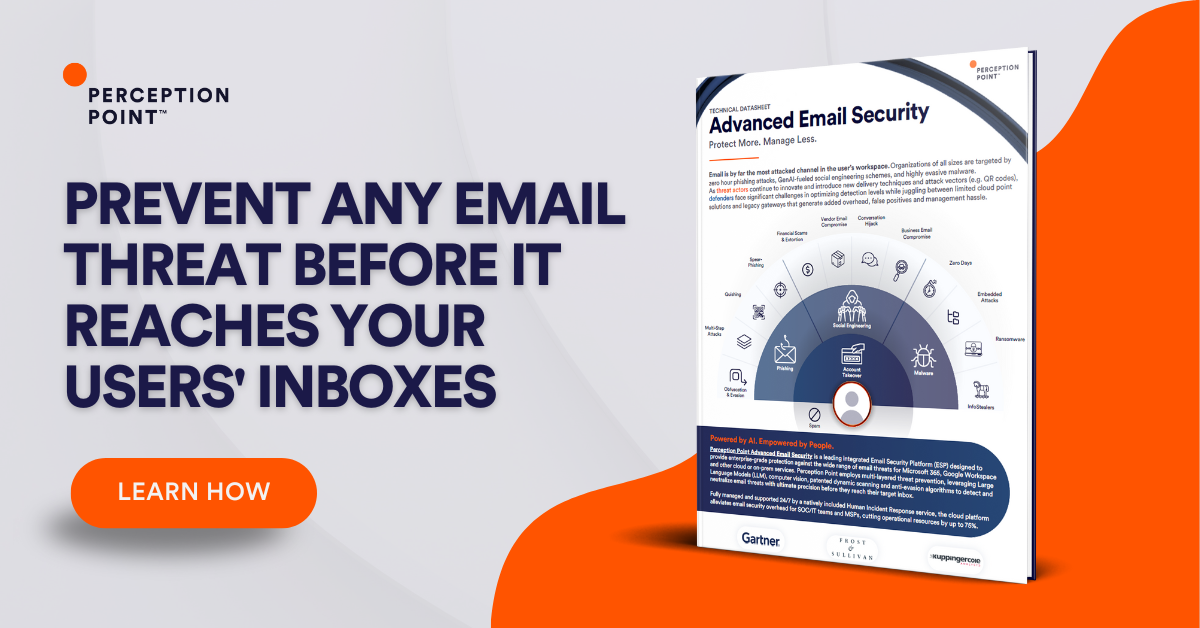
Anti-spam refers to the technologies, techniques, and practices employed to prevent spam, which is unsolicited or irrelevant messages sent over the internet, primarily through email. Anti-spam solutions are designed to detect, block, or filter out spam emails from users’ inboxes. They use a variety of methods to identify spam, including pattern recognition, blacklists, machine learning algorithms, and checking the authenticity of email sources.
An anti-spam tool offers the following important benefits:
1. Declutters email inboxes: By filtering out spam, an anti-spam system ensures that employees’ inboxes remain organized and focused on relevant communications.
2. Preventing phishing and other malicious emails: An effective anti-spam solution can identify and block phishing emails.
3. Prevents spread of viruses, spyware, and ransomware: An anti-spam system acts as a barrier against these threats, improving security. However anti-spam solutions are not a replacement for anti-malware solutions, which must be deployed on user devices.
Here are some of the primary laws enacted around the world which place civil and criminal penalties on sending of unsolicited email.
1. USA: 2003 CAN-SPAM Act
2. EU: Directive on Privacy and Electronic Communications
3. UK: Data Protection Act
4. Canada: CASL
5. Australia: Spam Act of 2003
Here are the common ways anti-spam solutions filter and block spam emails.
1. Email Authentication Protocols
2. Checksum-Based Filtering
3. DNS-Based Blacklists
4. URL Filtering
5. Rule-Based Filtering
6 Strict Enforcement of RFC Standards
Here are some of the main components and processes involved in anti-spam.
1. Email Filtering
2. Recipient Verification
3. Sender Verification
4. Content Analysis
5. Reputation Scoring
Here are some things to consider when choosing an anti-spam solution.
1. Is the Anti-Spam Solution Cloud-Based?
2. How Easy Is It to Deploy?
3. How Fast Do the Solutions Scan Emails for Spam?
4. Does the Solution Use Machine Learning?
5. Does the Solution Support Greylisting?
6. Are Anti-Spam Policies Configurable?
7. Does the Solution Offer an Incident Response Service to Deal with Email Security Incidents?


